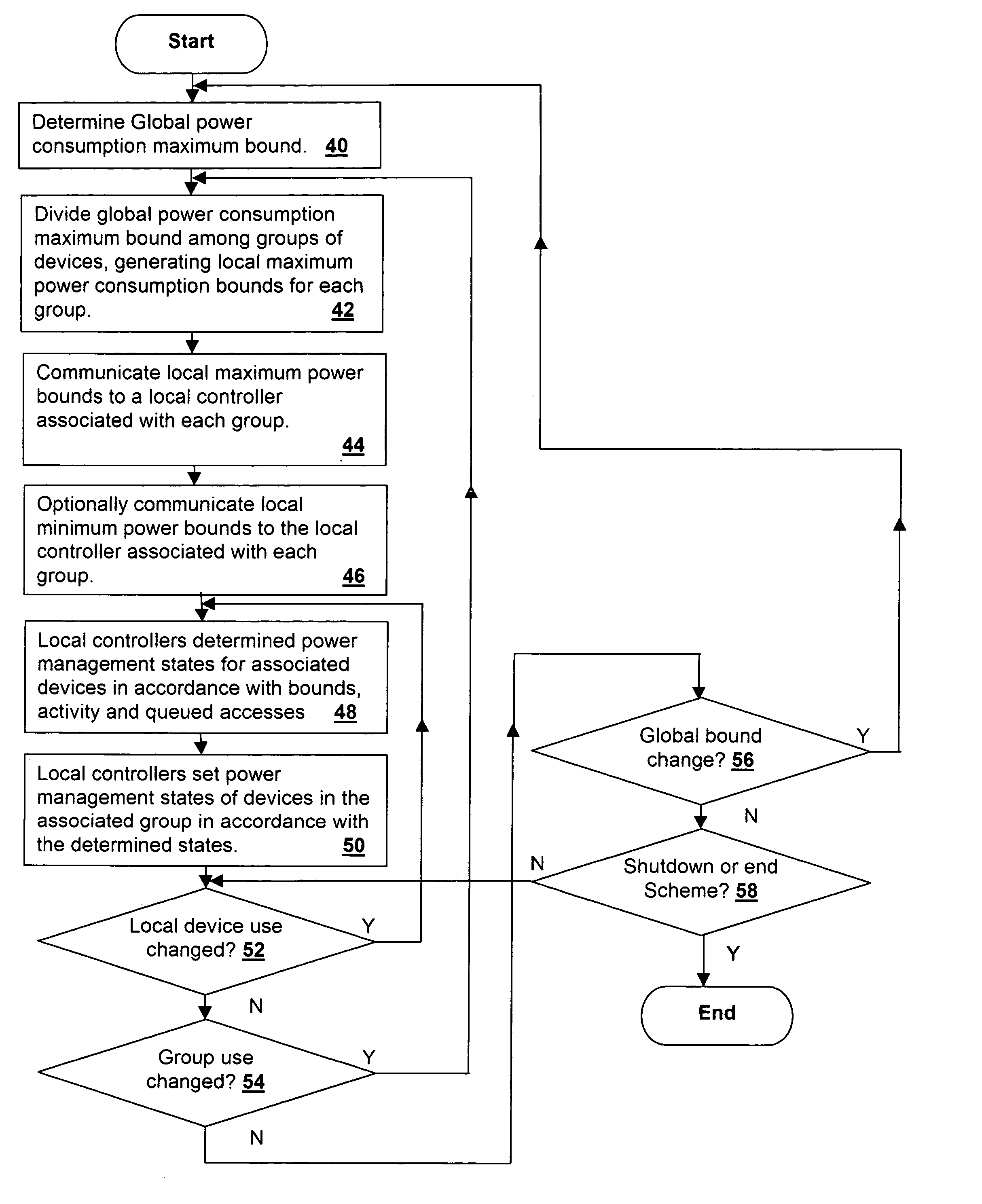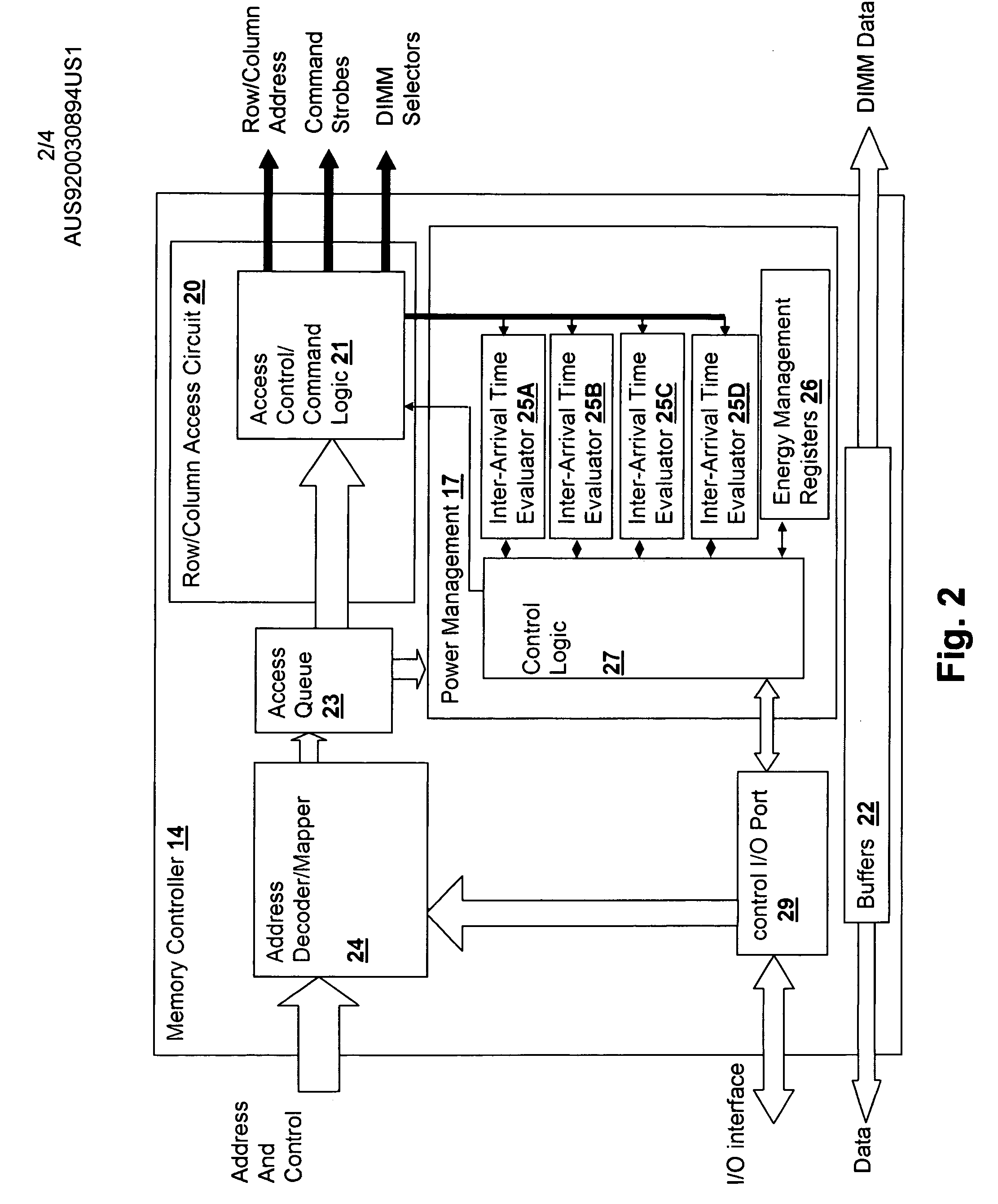Method and system for power management including local bounding of device group power consumption
a technology of power consumption and local bounding, applied in the direction of liquid/fluent solid measurement, sustainable buildings, instruments, etc., can solve the problems of system exacerbate the problem, reduce processing throughput, and not design the total available power supply, so as to reduce the change in power management state, the effect of avoiding current spikes in the power distribution network of the processing system
- Summary
- Abstract
- Description
- Claims
- Application Information
AI Technical Summary
Benefits of technology
Problems solved by technology
Method used
Image
Examples
Embodiment Construction
[0020] The present invention concerns local control and evaluation of power management settings at the device controller level within a processing system, in conjunction with global control that sets maximum power consumption bounds for groups of devices within the processing system. The above-incorporated patent application discloses a device controller-based power management scheme that provides improved responsiveness to local resource demands, while reducing power consumption of attached devices with a granularity much finer than is possible with global-only power management control schemes. However, if control of power management is left purely at a local level, overall system power consumption cannot be exactly predicted or controlled, as the local controllers solely determine the power management state of the system at a given instant. Further, changes in local power consumption levels due to changing power management states of devices at the local level leads to dramatic cha...
PUM
 Login to View More
Login to View More Abstract
Description
Claims
Application Information
 Login to View More
Login to View More - R&D
- Intellectual Property
- Life Sciences
- Materials
- Tech Scout
- Unparalleled Data Quality
- Higher Quality Content
- 60% Fewer Hallucinations
Browse by: Latest US Patents, China's latest patents, Technical Efficacy Thesaurus, Application Domain, Technology Topic, Popular Technical Reports.
© 2025 PatSnap. All rights reserved.Legal|Privacy policy|Modern Slavery Act Transparency Statement|Sitemap|About US| Contact US: help@patsnap.com



